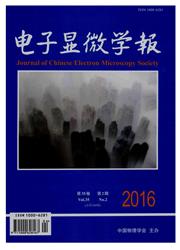

 中文摘要:
中文摘要:
通过不同温度的热变形及保温获得不同状态的奥氏体组织,用EBSD取向成像技术分析其在冷却时形成马氏体的难易,并关注各类奥氏体转变成马氏体的难易与奥氏体取向的关系。结果表明,马氏体相变从难到易的奥氏体状态依此是:细小的动态再结晶晶粒、形变长条晶粒、细小等轴的静态再结晶晶粒、粗大奥氏体晶粒。形变抑制六方ε马氏体的能力比抑制体心立方的α'马氏体低得多。形变奥氏体晶粒因取向不同,内部亚晶间取向差不同,从而形变储能不同,抑制相变的能力也就不同。最难发生相变的奥氏体取向为〈110〉,随形变温度升高,这种取向择优程度减弱。
 英文摘要:
英文摘要:
By hot compression and holding at different temperatures,various austenitic states were obtained.EBSD orientation mapping was used to identify the easiness of martensitic transformation during cooling and to determine the possible dependence of transformation on austenitic orientation.The results show that the easiness in transformation increased in the sequence of dynamic recrystallized austenite,deformed austenite,small statically recrystallized austenite and large grown austenite.Deformation restricted the formation of α′-martensite more effectively than that of ε-martensite.The difference in grain orientation leaded to the variety in stored energy and misorientation,and finally changed the tendency to transformation.The 〈110〉 stable compression orientation of austenite was found to restrict transformation the most significantly.As compression temperature increased,this feature of preferred orientation declined.
 同期刊论文项目
同期刊论文项目
 同项目期刊论文
同项目期刊论文
 Influences of thermal martensites and grain orientations on strain-induced martensites in high manga
Influences of thermal martensites and grain orientations on strain-induced martensites in high manga 期刊信息
期刊信息
